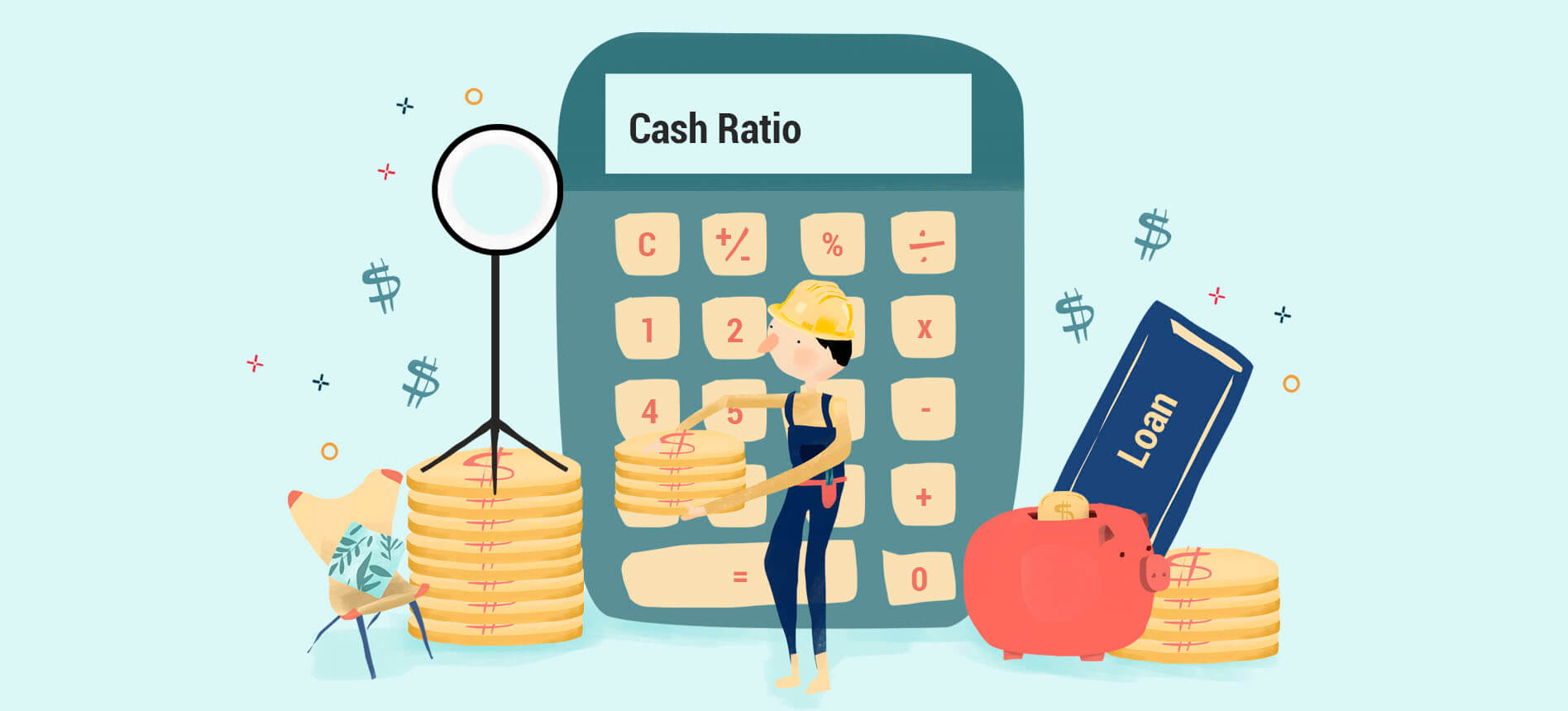As a business owner, it’s good to have a sense of your business’s financial health. But maybe you have a lot on your plate, and a complete financial analysis takes a lot of time.
So, what can you do?
At the very least, you need to know if your business is generating enough money to cover your immediate expenses.
You can use calculations like your cash ratio to get a read on your short-term financial health.
Cash Ratio Explained
Your cash ratio, sometimes called the cash asset ratio, is the ratio of your company’s total cash and cash equivalents to your short-term liabilities.
A cash ratio is a calculation that measures your company’s short-term liquidity, and it tells you two main things about your business:
The first is if you have enough cash or cash equivalents on hand to pay for short-term expenses, such as payroll and overhead. Second, it’s a measure of your ability to pay for your current debt load or raise cash by taking on new loans.
When you apply for a business loan, lenders may look at your cash ratio to determine your ability to make loan payments.
Higher liquidity means you have enough cash on hand to pay for current liabilities and take on new loans. In other words, you can afford to pay your short-term bills without having to sell assets like investments, equipment, or real estate.
Cash Ratio Calculator
To calculate your cash ratio, you can use our handy calculator:
Or you can calculate your cash ratio manually with this formula:
Cash Ratio = (Cash + Cash Equivalents) / Total Current Liabilities
You can find cash and cash equivalents (CCE) on the top line of your company’s balance sheet listed as a current asset.
Cash equivalents refer to any assets that you can convert to cash within three months. Examples include bank accounts, certificates of deposit, treasury bills, and money market funds.
Current liabilities include the payments you need to make in the short-term, usually within the next 12 months. Accounts payable, short-term debt, dividends payable, and income taxes are typical examples of current liabilities.
Cash Ratio Calculation Example
To better understand how to calculate the cash ratio, consider an example. Imagine you own a construction business, and you have the following on your balance sheet.
Cash: $20,000
Cash Equivalents: $15,000
Accounts Receivable: $10,000 (not included in calculation)
Inventory: $5,000 (not included in calculation)
Accounts Payable: $30,000
Short-Term Debt: $8,000
Long-Term Debt: $20,000 (not included in calculation)
To get your cash ratio, enter the following values into the cash ratio formula.
Cash Ratio = (Cash + Cash Equivalents) / Current Liabilities
Cash Ratio = (Cash + Cash Equivalents) / (Accounts Payable + Short-Term Debt)
Cash Ratio = ($20,000 + $15,000) / ($30,000 + $8,000)
Cash Ratio = $35,000 / $38,000 = 0.92
Although accounts receivable and inventory are considered current assets on the balance sheet, they are not included in the cash ratio calculation. The cash ratio calculation also excludes long-term debt.
Interpreting Cash Ratio
So, you’ve calculated your cash ratio, but what does it mean? Here’s how to interpret different cash ratio values.
Cash Ratio Equal to 1
If your company’s cash ratio is equal to 1, it means that the value of your short-term liabilities is precisely equal to the amount of cash and cash equivalents you have on hand. In other words, you can pay off your short-term obligations, but you won’t have cash left over.
Cash Ratio Greater Than 1
A cash ratio greater than 1 indicates high liquidity, which means you have enough cash and cash equivalents to cover your short-term payments and still have money left over.
If you want to apply for a business loan, a cash ratio greater than 1 is a good sign to creditors that you can afford to take on new debt.
However, a high cash ratio (2:1 or higher) can signal poor cash flow management. For example, it can be better to use excess cash reserves to pay off high-interest debt early or invest in growing your business.
Cash Ratio Less Than 1
A cash ratio of less than 1 means you have more current liabilities than cash on hand. However, that is not necessarily a bad sign.
You may still have enough current assets (accounts receivable and inventory) on hand to cover your company’s current liabilities.
While there is no magic number to aim for with your cash ratio, it’s recommended that you keep your ratio at least between 0.5 and 1.
Using Cash Ratio with Other Financial Ratios
Cash isn’t the only asset you have to pay for your bills and debts. Your current assets such as accounts receivable and inventory can be converted to cash to pay for short-term obligations.
In addition to the cash ratio, you can use the current ratio and quick ratio to get a comprehensive picture of your business’s financial health.
The cash ratio is the most conservative of the liquidity measurements because it excludes short-term assets such as accounts receivable or inventory. On the other hand, both the quick ratio and the current ratio measure your company’s current assets compared to its current liabilities.
The quick ratio has a stricter definition of current assets. It only includes highly liquid assets that you can convert to cash within three months.
Quick Ratio
The quick ratio, also known as the acid-test ratio, is calculated as such:
Quick Ratio = (Current Assets - Inventory)/Current Liabilities
Where current assets include:
- Cash & Cash Equivalents
- Marketable Securities
- Accounts Receivable (that can be collected within 90 days)
And current liabilities are:
- Accounts Payable
- Short-Term Debt
Ideally, your quick ratio should be equal to 1 or a little higher. Anything less tells investors and financial analysts that you couldn’t pay off your short-term debts if they all came due at once.
Current Ratio
The current ratio is the most liberal of the three as it includes your company’s total current assets. It’s calculated with the following formula.
Current Ratio = Current Assets/Current Liabilities
Where current assets include:
- Cash & Cash Equivalents
- Marketable Securities
- Accounts Receivable (that can be collected within 12 months)
- Inventory
- Prepaid Expenses
And current liabilities are:
- Accounts Payable
- Short-Term Debt
As a business owner, you want to have a current ratio higher than 1, which means you can pay off your short-term obligations without selling long-term assets. If you’re looking for investors, you want to have a current ratio closer to 2.
Analyzing Your Financial Strength
When assessing your business’s financial health, including multiple calculations in your ratio analysis is essential. In particular, you can combine your cash ratio with one (or both) of the other liquidity ratios to get a better picture of your short-term financial state.
For example, if your cash ratio is 0.75, but your quick ratio is 1, you know that you have enough on hand to pay your creditors, vendors, and employees in the short term.
For assistance with automating and streamlining your payroll, explore Hourly’s easy and accurate payroll solution.










